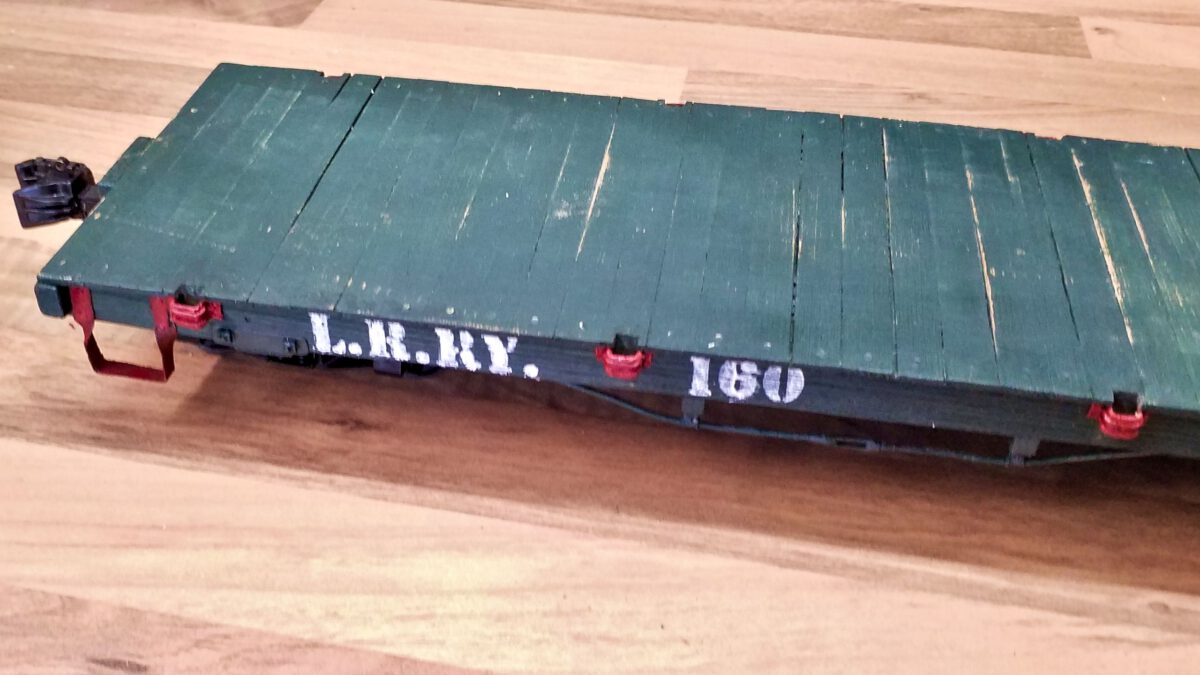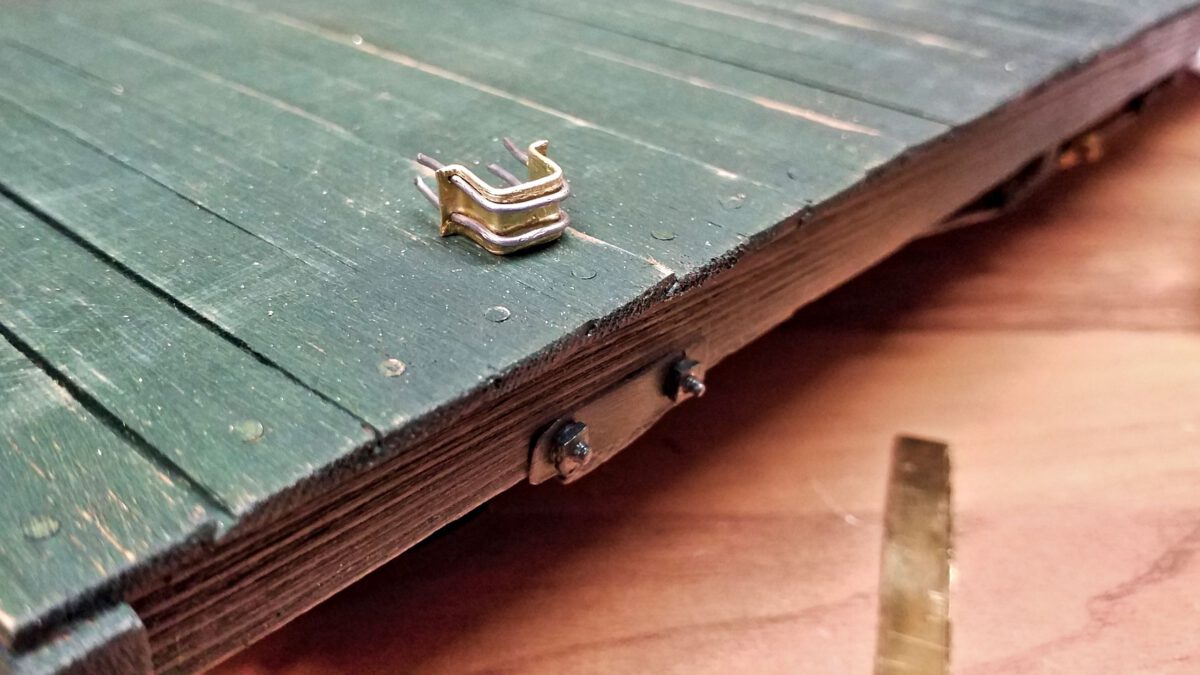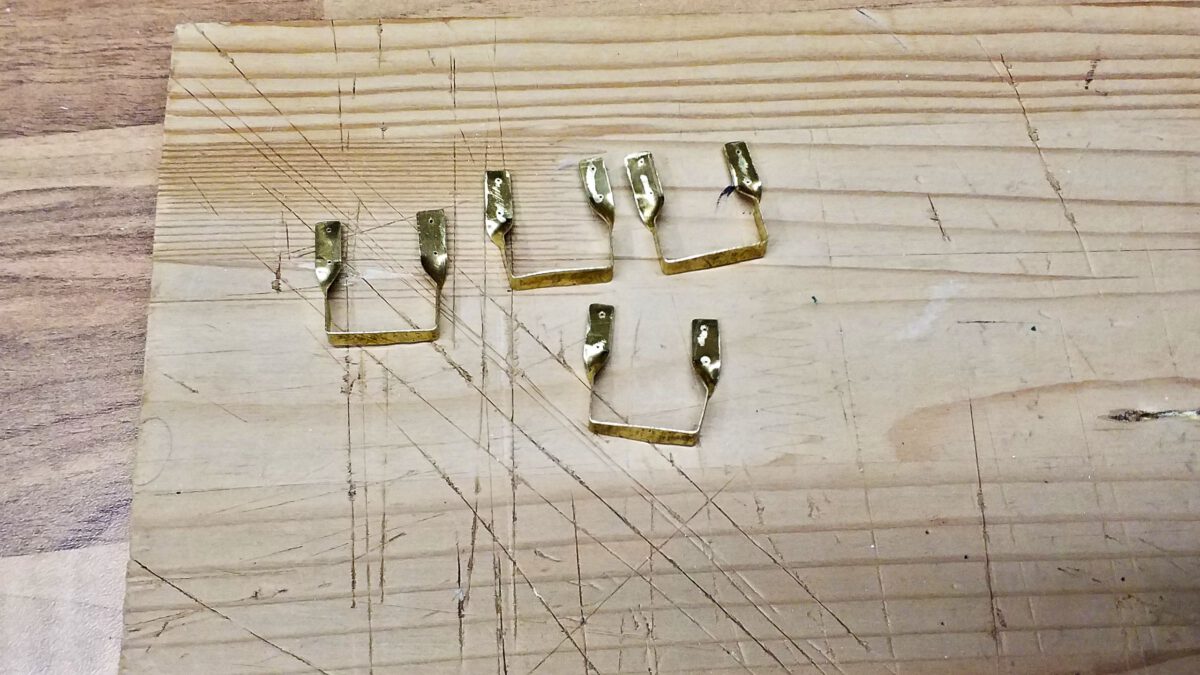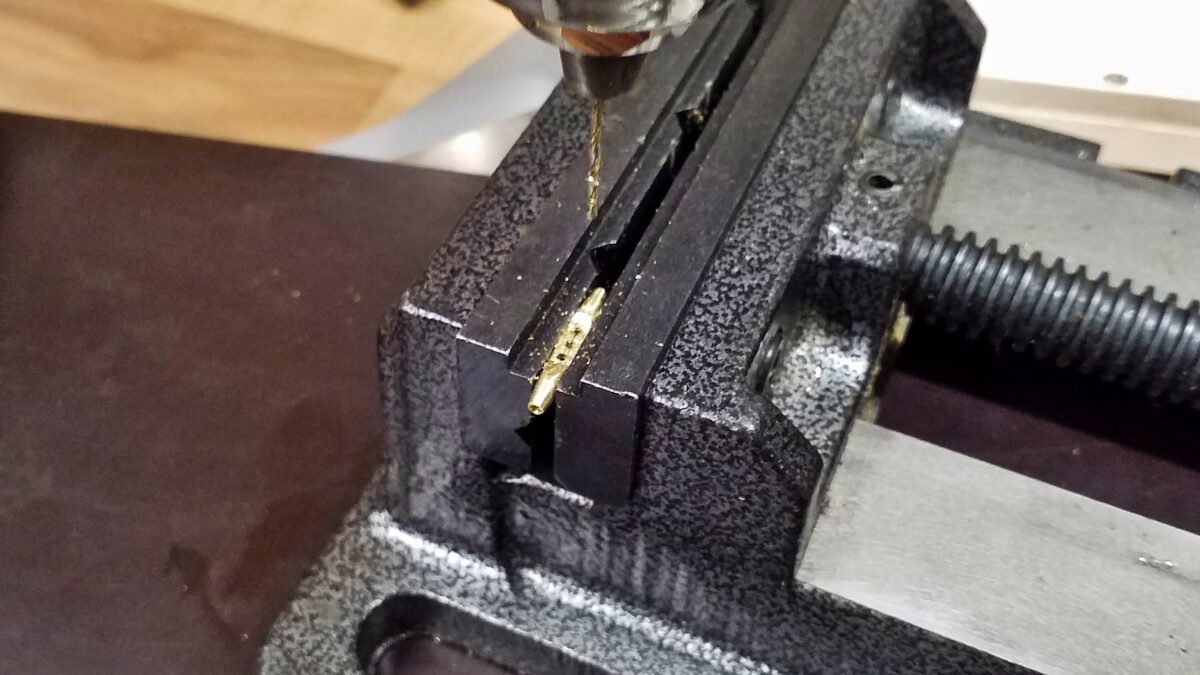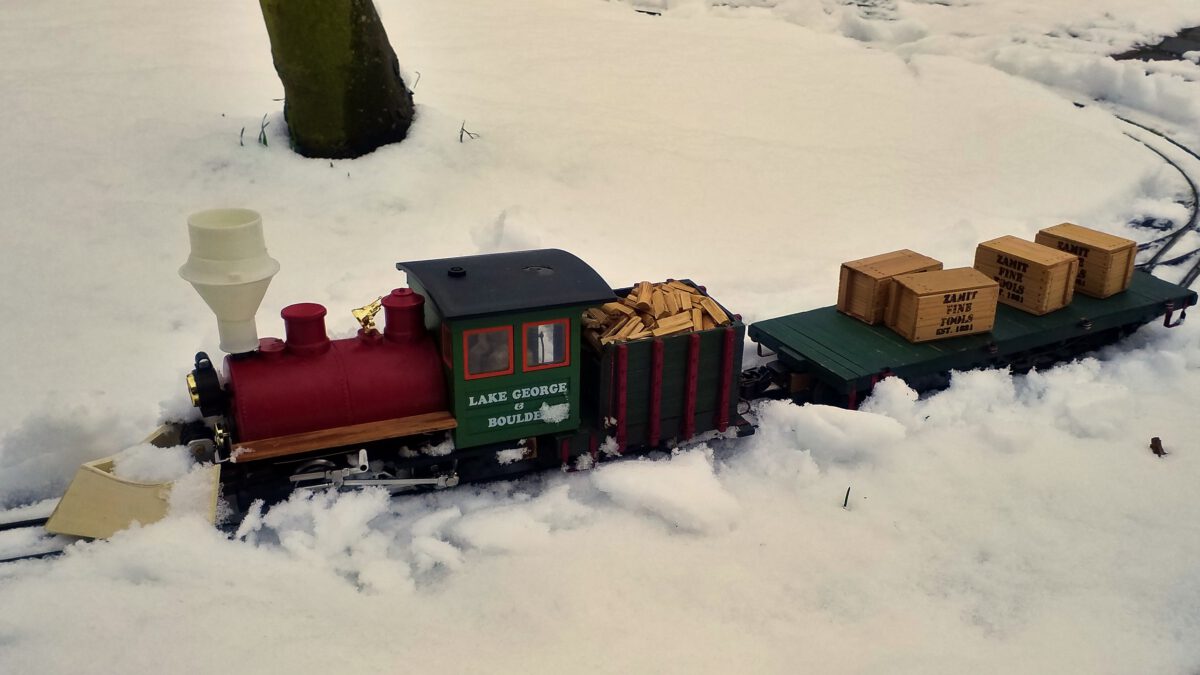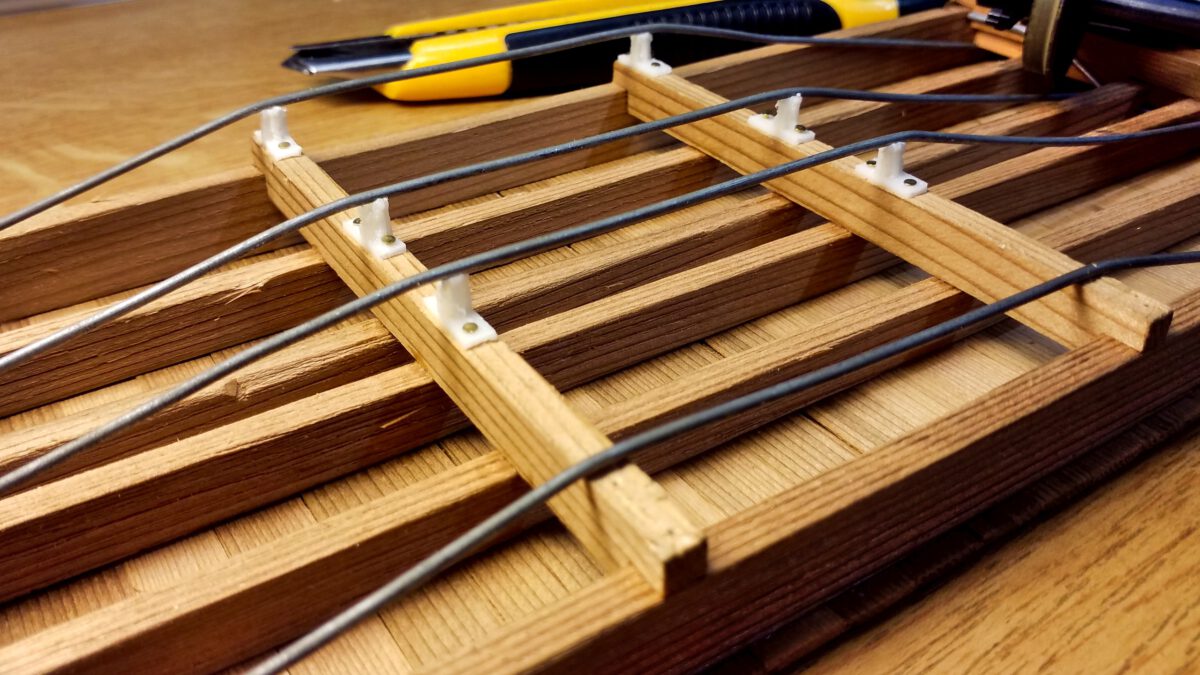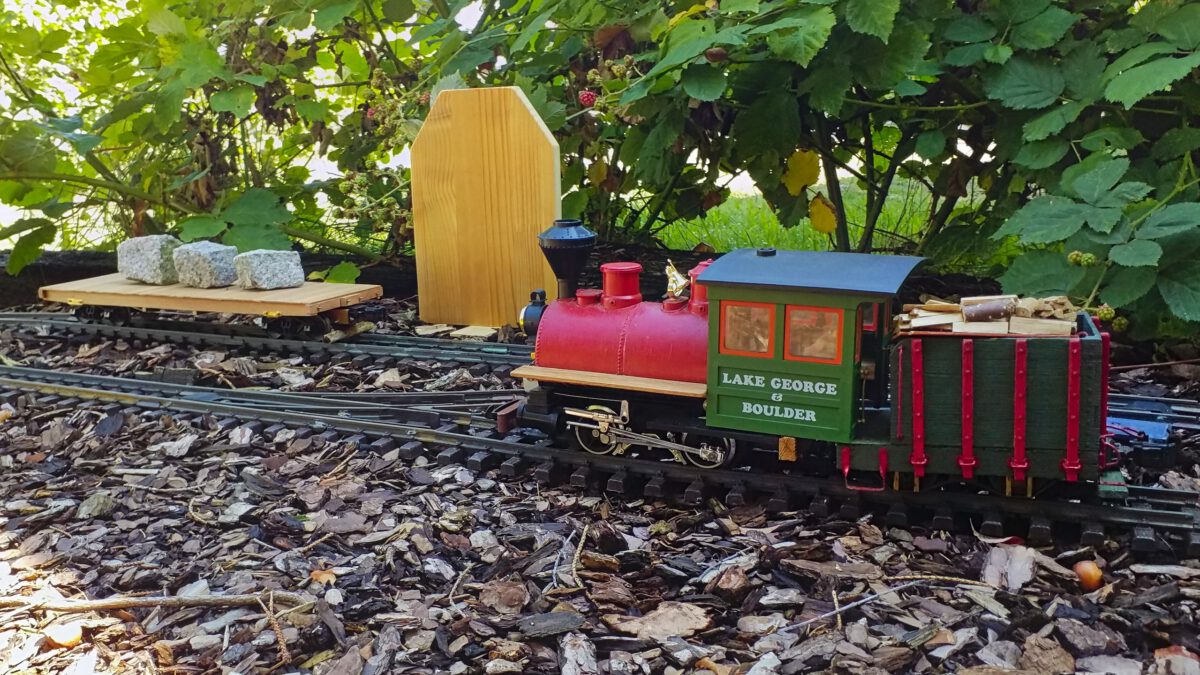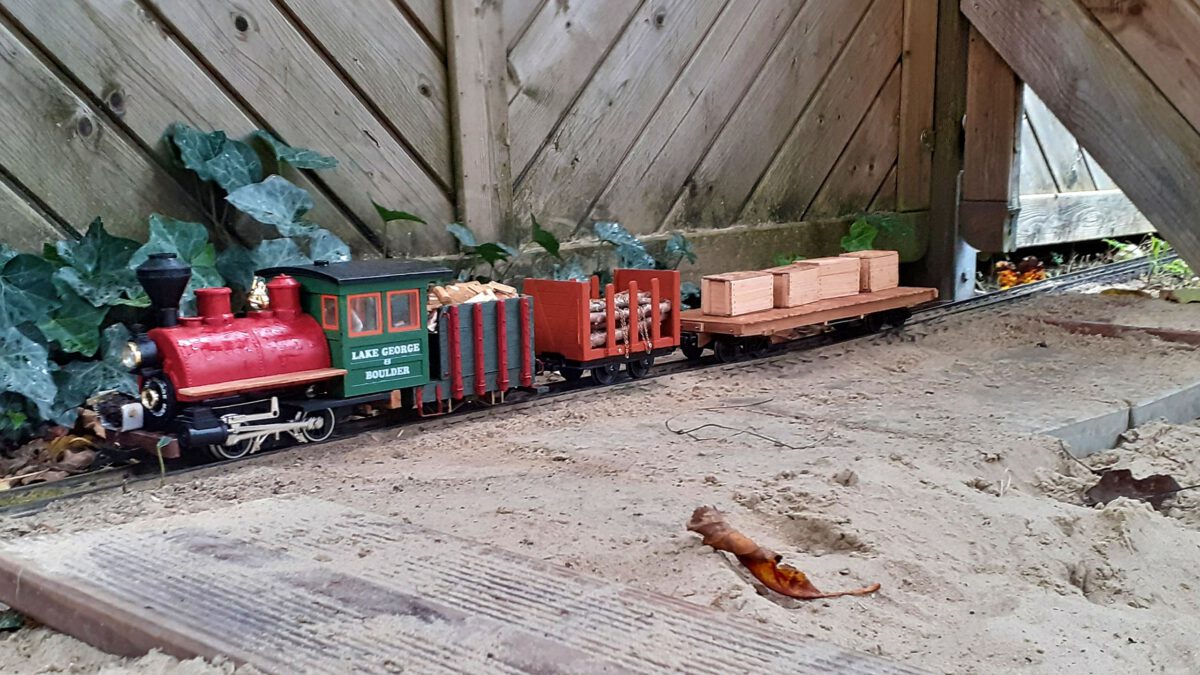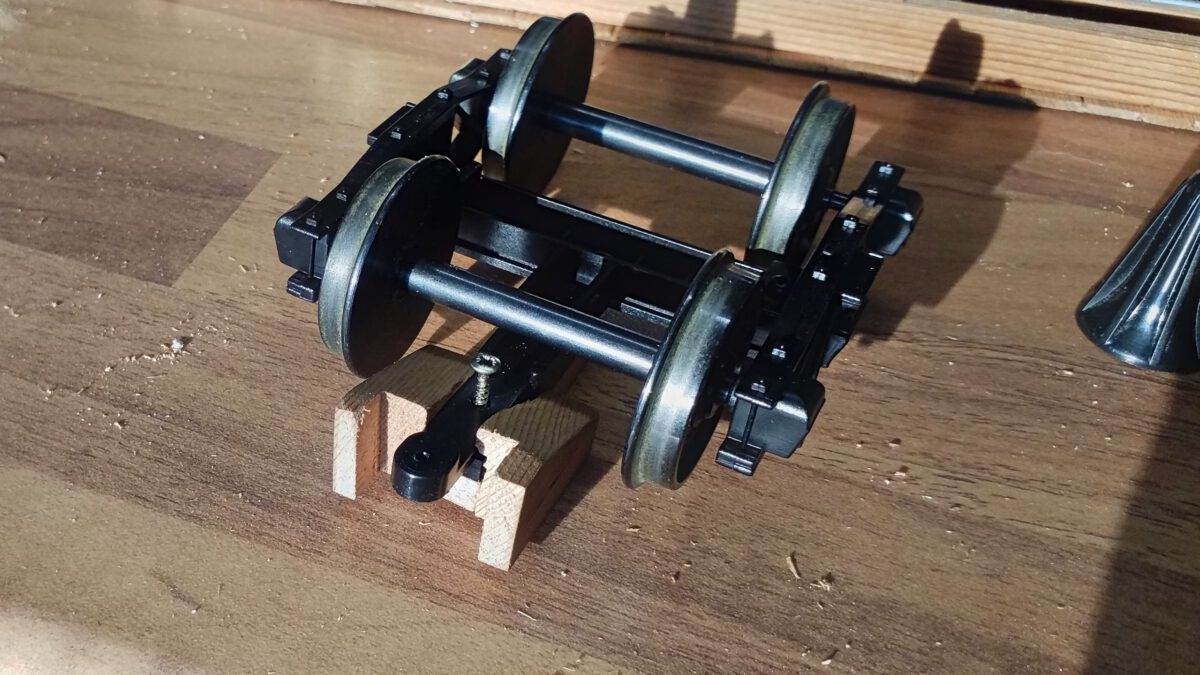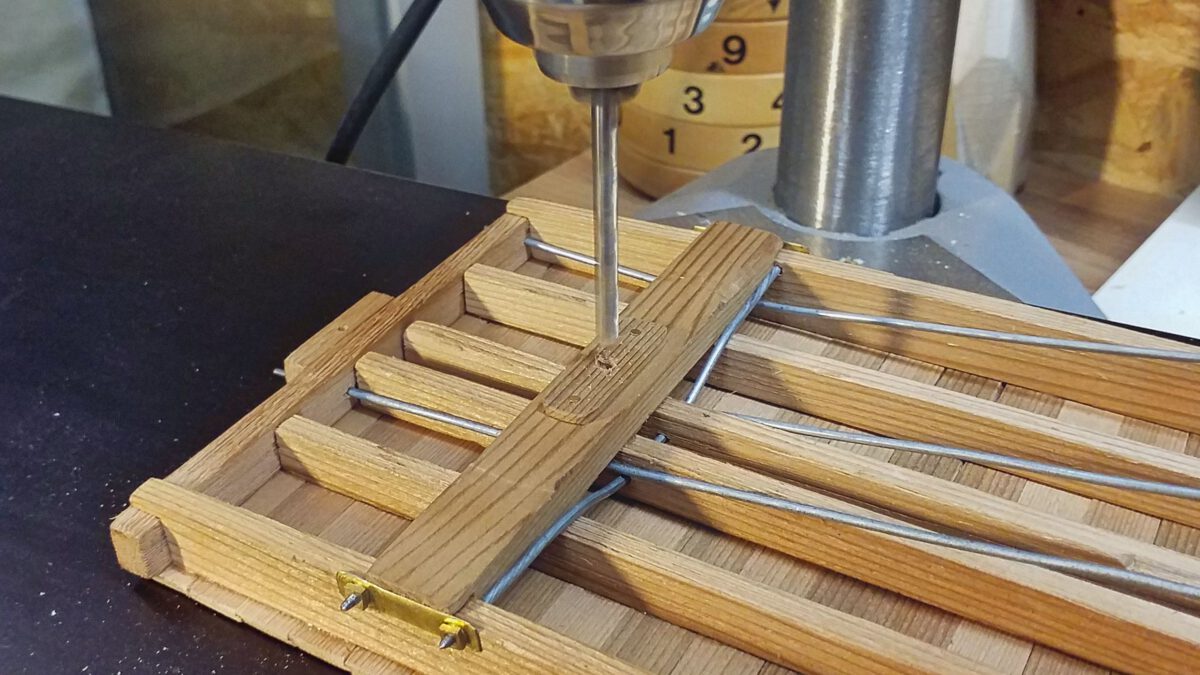After finishing the stake pockets, I’d like to address the lettering. Encouraged by the good results of lettering the freight crates, I’ve created stamps for the railroad company, waggon number and some technical numbers. And I managed to find flexible 3D printing filament, namely TPU.
Tag: 160 Flatcar
Flatcar Prototype: Stake Pockets
By constructing the steps the flatcar has gained some character, but of course this can only be the beginning. The next topic is to build the stake pockets. I’ve already constructed stake pockets for my porter’s tender and gained some valueable experience. I’ll profit from it while moving on.
Flatcar Prototype: Steps
After the flatcar has got its turnbuckles, the next step will be… well, steps so the Lead Road Railways’ conductors don’t have to do so many pullups any more.
I’ve already built steps for my porter’s tender, so these are charted territories for a change. In fact I took the tender’s steps’ measurements and copied them as a small batch.
And since I didn’t show much about how I made those steps, this time I’d like to give a detailed report.
Flatcar Prototype: Turnbuckles
By mounting the queenposts the waggon’s substructre is now ready for the turnbuckles. The prototype is used to adjust the trusses’ tension in order to avoid the waggon’s floor to sag. I decided to go for a scratch-build again, since the cast pieces are currently very hard to come by and on top of that they would have been the weakest link in my current construction. However, as a matter of fact it’s very time-consuming to build them manually.
No.1 Porter: Snow Plough
Last week, after many years we finally had snowfall. I couldn’t miss out on that one, so out came the rolling stock and off we go!
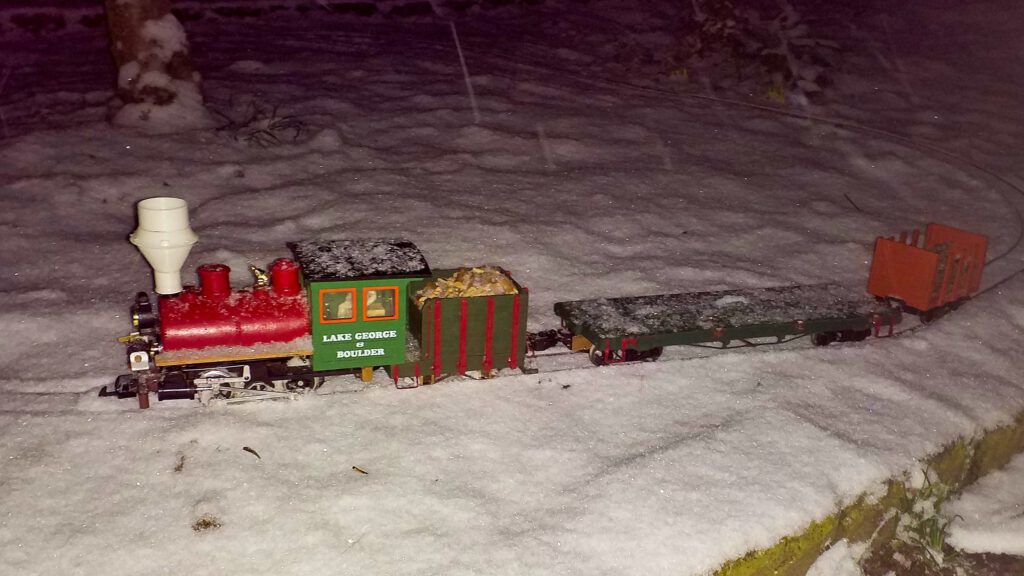
The joy got somewhat marred, though, since the falling snow caused all the wheels to build up ice and caused many derailments. However, the snow remained and when the snowfall finally stopped at 11 o’clock the next morning, the whole layout was covered in a white blanket. I just couldn’t miss out on that opportunity! So, off to the workshop.
Below, I’d like to show how one can improvise a working snow plough in less than one hour.
Flatcars Prototype: Detailing the Underside
After busying myself for a while with the bogies and couplers, it’s time to start detailing the flatcar. Though they are not that striking at first glance, the details will significantly add up to the overall picture. And since they are the most visible parts, I’m starting with the trusses or more specifically the queenposts.
New Garden Railroad: The Lead Road Railway
Those of you who have been following along for some time will remember, that I started my first own garden railroad during 2017. After I got stuck with it, so to speak, it was at the end of 2019 with a heavy heart that the railroad got deconstructed and I refocused on rolling stock. However, on the one hand I do need some sort of test track and on the other hand I don’t want to banish the dream of some future garden railroad altogehter.
So I’m pleased to announce that during the summer of 2020 the Lead Road Railway came into being.
Operation Session Autumn 2020
This time, believe it or not, we’ve had three battery-powered units in service, most of the time each had its own operator, too. Alas, the weather didn’t play along all the time, so a spontaneous layout extension was realized at the roofed porch. My No.1 braved the rain several times and did quite well. The encapsulated electronics really pay for themselves.
Flatcar Prototype: Bogie-Mounted Couplers
Based on my lessons learned during the last operation session, I’ve already started to mount couplers to the bogies. The result works very well, however I’m not quite happy with the looks: too clumsy, too heavy. So I’m trying a more delicate approach for the second coupler.
Flatcars Prototype: Lessons Learned from the Operation Session
Our Summer Operation Session was a lot of fun, but most of all it was informative. I learned three very important lessons concerning my flatcar prototype:
- Frame-mounted couplers need large radii
- Bogies need clearance for operational reliability
- Bogie-mounted couplers increase reliabilty

